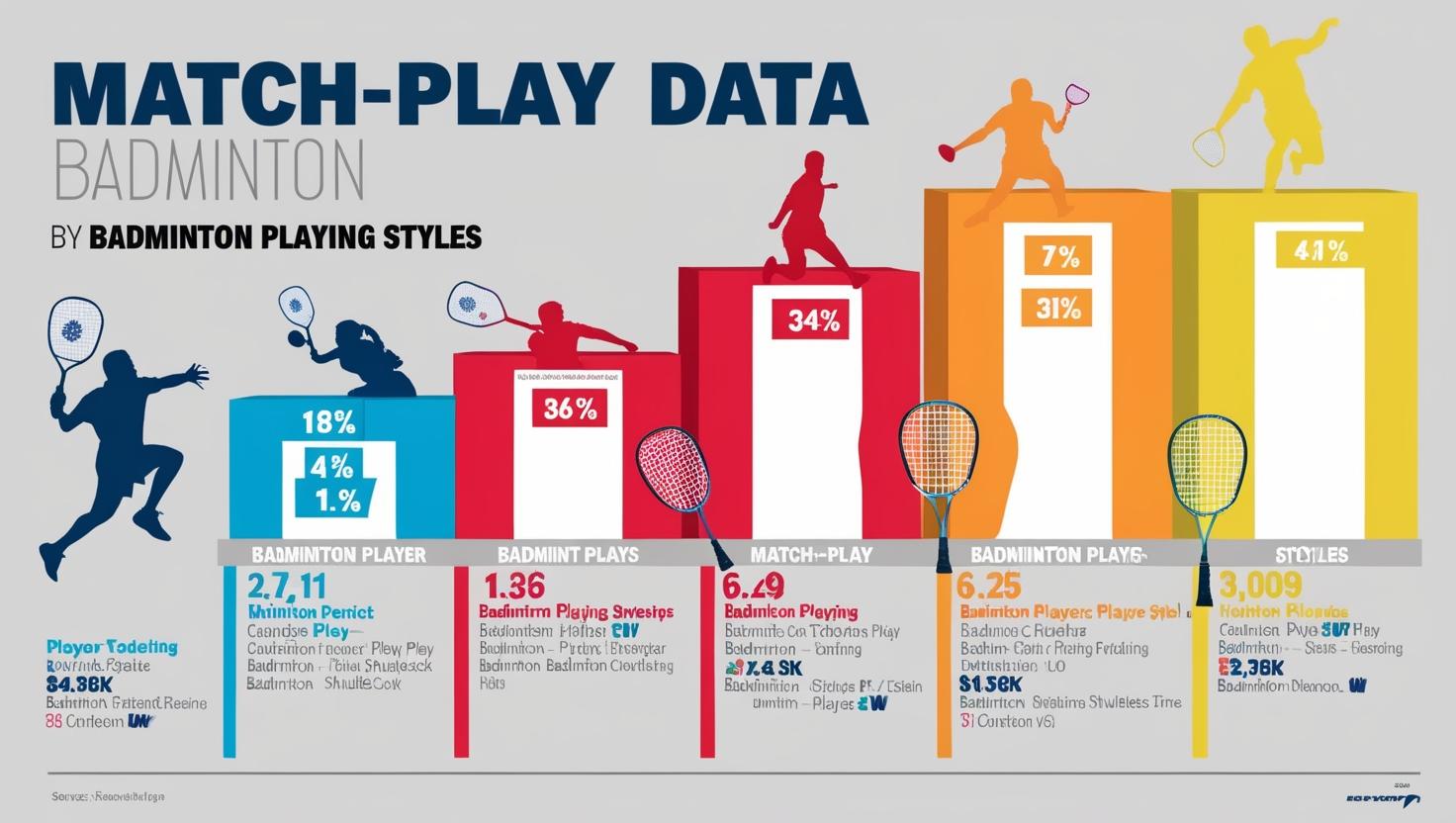Blog
Match-Play Data According to Playing Categories in Badminton: A Systematic Review

Introduction to the Article
The article Match-Play Data According to Playing Categories in Badminton: A Systematic Review, authored by Bagus Winata, Joana Brochhagen, Tommy Apriantono, and Matthias Wilhelm Hoppe, systematically reviews the match-play characteristics of badminton across different playing categories. Published in Frontiers in Sports and Active Living, the study investigates key differences in technical-tactical actions, physiological demands, and external load across five playing categories: men’s singles, women’s singles, men’s doubles, women’s doubles, and mixed doubles.
The authors conducted a systematic literature search across six major academic databases, including ScienceDirect, PubMed, Google Scholar, Scopus, Web of Science, and Cochrane Library, following PRISMA guidelines. Studies included in the review focused on performance parameters such as match duration, effective playing time, rally characteristics, movement demands, and physiological responses. The final selection comprised 34 studies, which were evaluated for methodological quality using the AMSTAR-2 tool.
Summary of Key Aspects
Selection of Studies and Methodological Quality
A total of 12,967 studies were initially identified, from which 34 met the inclusion criteria after screening. The AMSTAR-2 assessment classified 29 studies as high quality and five as moderate quality. The selected studies provided descriptive match-play data, with no intervention-based studies included in the review.
Match Duration and Playing Structure Across Categories
The findings indicate significant differences in match duration, work density, and rest periods across different categories. Men’s singles matches had the longest duration, followed by women’s singles, while doubles matches were shorter due to higher rally intensity and reduced workload per player.
Effective playing time in badminton ranged between 31% and 45% of total match duration, with longer rallies observed in men’s singles compared to women’s singles and doubles categories. In doubles matches, faster-paced exchanges and shorter breaks between rallies resulted in higher rally frequency.
Physiological Load and Movement Demands
Physiological demands varied substantially across categories. Men’s singles players exhibited the highest physiological load, with significantly greater values of heart rate (HR), oxygen consumption (VO2), and blood lactate concentration compared to other categories.
Doubles players experienced lower internal load due to shared workload distribution. However, subtle differences were observed between men’s and women’s doubles, with slightly lower lactate values reported in women’s doubles matches.
Technical-Tactical Differences Between Categories
The review highlights notable differences in stroke frequency and type across playing categories. In men’s singles, players executed a higher number of smashes, drives, and attacking clears, while women’s singles matches featured more drop shots and defensive clears.
Doubles matches exhibited faster rally exchanges and a reduced number of strokes per rally compared to singles matches. In women’s doubles, rallies lasted longer, with an emphasis on defensive play, in contrast to men’s doubles, where points were shorter and characterized by higher shot speed.
Regarding movement patterns, singles players covered a greater total distance on court compared to doubles players, who demonstrated more frequent but shorter movements due to shared court coverage.
Methodological Considerations and Limitations
The review did not include a meta-analysis due to the heterogeneity of the selected studies. Differences in data collection methods and performance metrics across studies limited direct quantitative comparisons.
Additionally, most included studies focused exclusively on elite players, limiting the applicability of findings to lower-level athletes. The authors also note that there is a lack of research examining specific differences between men’s, women’s, and mixed doubles, highlighting a potential area for future investigation.
Conclusions and Practical Applications
This systematic review highlights key differences in match-play data across the five playing categories in badminton, each placing distinct demands on the players. Men’s singles matches are characterized by explosive movements at high intensity, requiring not only a high aerobic capacity but also sufficient anaerobic capacity. In contrast, women’s singles involve a greater emphasis on defensive play and smoother strokes, indicating a higher aerobic demand compared to men’s singles.
For doubles categories, matches exhibit a higher shot frequency, but no clear conclusions regarding individual playing demands can be drawn due to a lack of outcome measures at the individual player level. The findings underscore the importance of tailored training programs that align with the specific physiological and technical requirements of each category.
Despite providing valuable insights, the review also acknowledges key limitations. A meta-analysis could not be conducted due to the heterogeneity of the included studies, and differences in playing levels among athletes were not analyzed as they fell outside the scope of this study. These limitations highlight the need for further research to refine the understanding of category-specific demands.
From a practical standpoint, scientists and coaches should implement training and testing procedures that prepare players according to the specific requirements of their playing category. Ensuring that athletes develop the appropriate aerobic and anaerobic capacities, shot execution strategies, and movement efficiency will be critical for optimizing performance across all levels of competitive badminton.